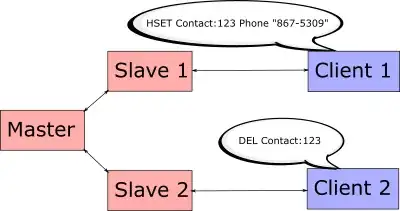I'm trying to teach myself how to calculate BigO notation for an arbitrary function. I found this function in a textbook. The book asserts that the function is O(n2). It gives an explanation as to why this is, but I'm struggling to follow. I wonder if someone might be able to show me the math behind why this is so. Fundamentally, I understand that it is something less than O(n3), but I couldn't independently land on O(n2)
Suppose we are given three sequences of numbers, A, B, and C. We will assume that no individual sequence contains duplicate values, but that there may be some numbers that are in two or three of the sequences. The three-way set disjointness problem is to determine if the intersection of the three sequences is empty, namely, that there is no element x such that x ∈ A, x ∈ B, and x ∈ C.
Incidentally, this is not a homework problem for me -- that ship has sailed years ago : ), just me trying to get smarter.
def disjoint(A, B, C):
"""Return True if there is no element common to all three lists."""
for a in A:
for b in B:
if a == b: # only check C if we found match from A and B
for c in C:
if a == c # (and thus a == b == c)
return False # we found a common value
return True # if we reach this, sets are disjoint
[Edit] According to the textbook:
In the improved version, it is not simply that we save time if we get lucky. We claim that the worst-case running time for disjoint is O(n2).
The book's explanation, which I struggle to follow, is this:
To account for the overall running time, we examine the time spent executing each line of code. The management of the for loop over A requires O(n) time. The management of the for loop over B accounts for a total of O(n2) time, since that loop is executed n different times. The test a == b is evaluated O(n2) times. The rest of the time spent depends upon how many matching (a,b) pairs exist. As we have noted, there are at most n such pairs, and so the management of the loop over C, and the commands within the body of that loop, use at most O(n2) time. The total time spent is O(n2).
(And to give proper credit ...) The book is: Data Structures and Algorithms in Python by Michael T. Goodrich et. all, Wiley Publishing, pg. 135
[Edit] A justification; Below is the code before optimization:
def disjoint1(A, B, C):
"""Return True if there is no element common to all three lists."""
for a in A:
for b in B:
for c in C:
if a == b == c:
return False # we found a common value
return True # if we reach this, sets are disjoint
In the above, you can clearly see that this is O(n3), because each loop must run to its fullest. The book would assert that in the simplified example (given first), the third loop is only a complexity of O(n2), so the complexity equation goes as k + O(n2) + O(n2) which ultimately yields O(n2).
While I cannot prove this is the case (thus the question), the reader can agree that the complexity of the simplified algorithm is at least less than the original.
[Edit] And to prove that the simplified version is quadratic:
if __name__ == '__main__':
for c in [100, 200, 300, 400, 500]:
l1, l2, l3 = get_random(c), get_random(c), get_random(c)
start = time.time()
disjoint1(l1, l2, l3)
print(time.time() - start)
start = time.time()
disjoint2(l1, l2, l3)
print(time.time() - start)
Yields:
0.02684807777404785
0.00019478797912597656
0.19134306907653809
0.0007600784301757812
0.6405444145202637
0.0018095970153808594
1.4873297214508057
0.003167390823364258
2.953308343887329
0.004908084869384766
Since the second difference is equal, the simplified function is indeed quadratic:
[Edit] And yet even further proof:
If I assume worst case (A = B != C),
if __name__ == '__main__':
for c in [10, 20, 30, 40, 50]:
l1, l2, l3 = range(0, c), range(0,c), range(5*c, 6*c)
its1 = disjoint1(l1, l2, l3)
its2 = disjoint2(l1, l2, l3)
print(f"iterations1 = {its1}")
print(f"iterations2 = {its2}")
disjoint2(l1, l2, l3)
yields:
iterations1 = 1000
iterations2 = 100
iterations1 = 8000
iterations2 = 400
iterations1 = 27000
iterations2 = 900
iterations1 = 64000
iterations2 = 1600
iterations1 = 125000
iterations2 = 2500
Using the second difference test, the worst case result is exactly quadratic.

